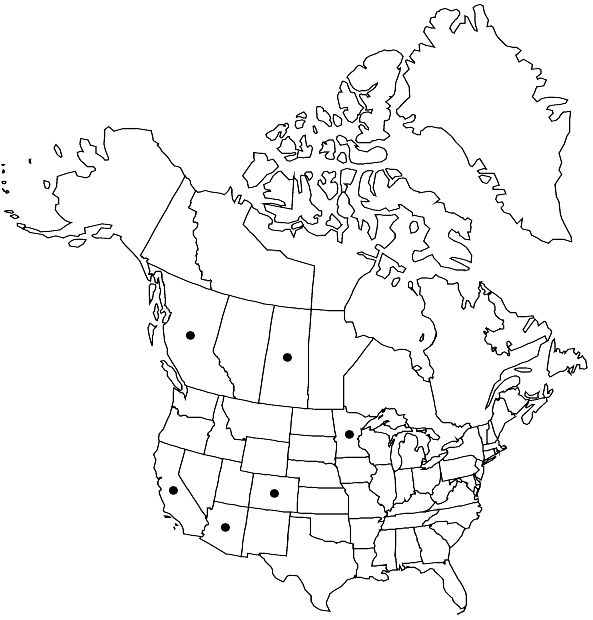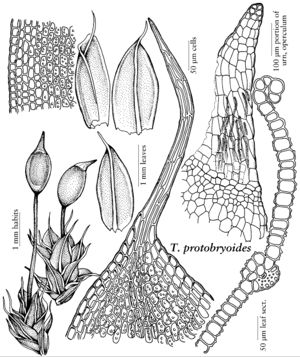Tortula protobryoides
Bull. Buffalo Soc. Nat. Sci. 32: 226. 1993,.
Leaves ovate to oblong-lanceolate, apex broadly acute to rounded, mucronate to short-awned, margins revolute in mid 2/3–3/4 of leaf, weakly bordered from apex to near base with (2–) 4 rows of weakly thicker-walled and less-papillose or smooth cells; costa excurrent, lacking an adaxial pad of cells though convex adaxially, distally narrow, 3–4 cells across adaxial surface; distal laminal cells subquadrate to hexagonal, occasionally somewhat elongated longitudinally, width 13–18 µm wide, 1 (–2):1, papillose with 4 (–6) simple papillae per lumen. Sexual condition autoicous. Sporophytes exerted. Seta length 0.2–0.4 cm. Capsule stegocarpic, not systylius, broadly cylindric, erect and nearly straight, urn ca. 1.4–1.5 mm; peristome remaining adherent to the inside of the operculum, teeth rudimentary to linear, to 300 µm, of several filaments variously anastomosing and weakly twisted, basal membrane length to 50 µm; operculum ca. 0.7–0.8 mm, not falling. Spores ca. 20–25 µm, spheric, densely low-papillose.
Phenology: Capsules mature winter–spring.
Habitat: Soil
Elevation: low elevations
Distribution

B.C., Sask., Ariz., Calif., Colo., Minn., Mexico (Baja California), Europe, sw Asia
Discussion
Selected References
None.
Lower Taxa
"um" is not declared as a valid unit of measurement for this property.
